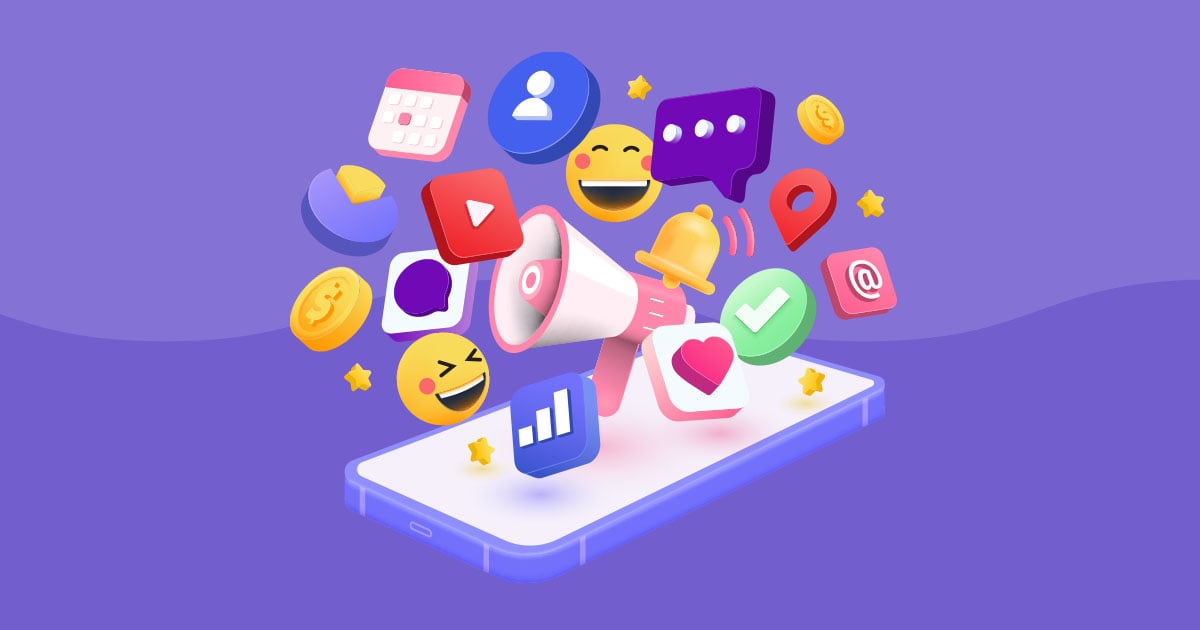
Today’s highly competitive business landscape has made standing out from the crowd a Herculean task. With hordes of brands vying for customers’ attention, establishing your online presence is a challenge. However, with the right strategies in place, differentiation is doable. Multichannel marketing is one such strategy. If you aren’t using it still, here’s how.
What is Multichannel Marketing and Why Does it Matter?

Multichannel marketing is a strategy that uses various communication channels to reach customers and prospects with a consistent message and experience. It aims to provide seamless and personalized experiences by engaging with them across multiple touchpoints, which include traditional and digital channels.
Multichannel marketing matters as it lets businesses reach customers where they are. They can do it using a variety of platforms such as email, social media, search engines, and even traditional media like television and print. They can create and send out a cohesive message which can increase their visibility and, in turn, boost sales and revenue.
The Benefits of Multichannel Marketing

If you’re still in doubt if multichannel marketing is right for your business, here are its benefits you wouldn’t want to miss out on:
- Wide reach and visibility – it increases your chances of being seen and heard. You can reach customers where they are most likely to be and expand your reach beyond your existing customer base.
- Improved customer targeting – lets you gain data and analytics that can help you understand your audience more. Knowing their preferences allows you to tailor your message and offers accordingly.
- Enhanced customer experience – allows you to create a seamless and consistent experience across multiple platforms. You can provide a more enjoyable and convenient experience, from shopping to checkout.
- Increased sales and revenue – positive shopping experiences result in higher customer satisfaction and loyalty. When this happens, your brand’s chances of increased sales and revenues become higher.
Platforms You Can Use for Your Multichannel Marketing Efforts

Below are some of the most popular and effective platforms you can consider for your multichannel marketing efforts:
Traditional Channels
- Television – is still an effective way to reach a broad audience. You can use local and national television to target specific demographics with geographic regions.
- Print Media – this includes newspapers, magazines, brochures, flyers, and other print materials. The use of these channels may have decreased in recent years, but they are still effective.
- Radio – just like television, radio is still effective despite its decline in today’s digital age.
Digital Channels
- Social Media – with billions using social media, it would be a waste for businesses not to leverage this channel. It can help you connect with customers and prospects on a personal level.
- Email Marketing – email allows businesses to reach customers with personalized messages and offers. You can also segment your email lists and send targeted messages relevant to the recipients.
- Search Engine Optimization (SEO) – this is the process of optimizing your website to help it rank higher on search engines. This allows you to get in front of your prospects and get them to go to your website.
- Influencer Marketing – this involves partnering with individuals with a large social media following (influencers) and having them promote your brand.
- Paid Advertising (PPC) – this is when you pay for platforms to advertise your brand, such as Google AdWords or Facebook Ads.
For an even higher chance of marketing success, creating a mix of traditional and digital channels is recommended to reach customers where they are.
How to Create Your Multichannel Marketing Strategy

The following are the steps you can take to create a successful multichannel marketing strategy:
Define Your Marketing Objectives
First, you need to define clear and measurable marketing objectives. These should align with your business goals. They should be specific, measurable, attainable, relevant, and time-bound (SMART). A few examples of this are increasing brand awareness, driving website traffic, generating leads, and boosting sales.
Identify Your Target Audience

After defining your marketing goals, it’s time to identify your audience. This is a crucial step as it will be the foundation of your marketing strategies. It will be the anchor with which you create your content and many other marketing and advertising assets. Understanding your audience helps you create a message that is relevant to them and determine the exact channels you should be using.
Map Your Customer Journey
This is the process your customers go through from the initial stage when they learn about your brand up to the time they make a purchase. You need to map your customers’ journey by understanding their pain points, preferences, and motivations at each stage of the funnel. Doing so lets you create an experience that’s both personalized and seamless.
Select Your Channels and Tactics
Once you have identified your audience and their needs, it’s time to select your channels and the tactics you need to use on each. As mentioned above, a great mix of traditional and digital media ups your chances of succeeding. After choosing the channels, you can then integrate and coordinate them to create a cohesive multichannel marketing experience for your customers.
Create a Cohesive Message and Brand
A cohesive message and brand involve setting a consistent tone of voice, visual identity, and messaging. This means creating these with your audience in mind and aligning them with your brand’s values and mission.
Measure and Analyze Results

To know if your strategies are working, you have to measure and analyze the results. This involves setting up metrics and KPIs that align with your marketing objectives. You will also use analytics tools to track and monitor the performance of your channels and tactics. Doing this lets you know which strategies and media are working and which are not.
Final Thoughts
The rise of e-commerce popularity has made the marketplace crowded. Standing out from all the noise can be a considerable challenge. If you’re looking for a way to enhance brand awareness, boost website traffic, and increase sales, multichannel marketing is the way to go.
If you need help creating amazing visual assets for your multichannel marketing efforts, Penji is your best design partner. Click on this link to get our talented graphic designers working for you.
About the author

Celeste Zosimo
Celeste is a former traditional animator and now an SEO content writer specializing in graphic design and marketing topics. When she's not writing or ranking her articles, she's being bossed around by her cat and two dogs.
Table of Contents
- What is Multichannel Marketing and Why Does it Matter?
- The Benefits of Multichannel Marketing
- Platforms You Can Use for Your Multichannel Marketing Efforts
- Traditional Channels
- Digital Channels
- How to Create Your Multichannel Marketing Strategy
- Define Your Marketing Objectives
- Identify Your Target Audience
- Map Your Customer Journey
- Select Your Channels and Tactics
- Create a Cohesive Message and Brand
- Measure and Analyze Results
- Final Thoughts










